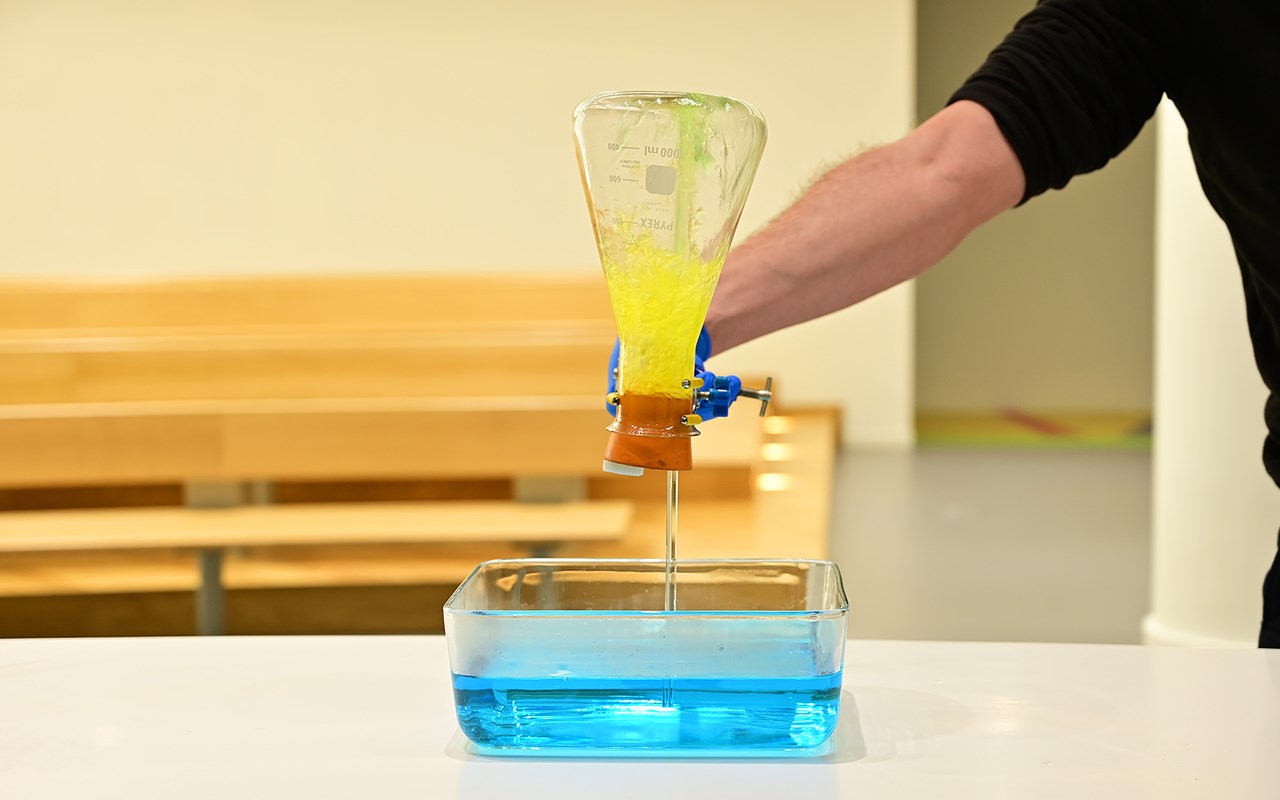stc
Heat – Thermodynamics
Physics demonstrations | 2nd grade of Gymnasium, 2nd grade of Lyceum

Required, call 210 9469641, Monday to Friday, 9:30-16:30
60 minutes
The dates and times shown are indicative and can be altered upon request in advance. Any science experiment demonstration can be arranged to take place between Monday and Friday from 09:00 to 15:00.
120 students
2nd grade of Gymnasium, 2nd grade of Lyceum (only school groups)
Introduction to the fundamental concepts of thermal physics and thermodynamics.
2nd Grade of Gymnasium
Why do woolen clothes keep us warm? How do radiators work? Why do the metal legs of a chair feel colder than its wooden surface at the same temperature? How do igloos keep Inuit warm? Why do pots and pans have wooden or plastic handles?
This series of experiments will help 2nd grade of Gymnasium students discover the science of everyday life and explore the concepts of temperature, heat, thermal energy and thermal equilibrium.
Students will experiment with different materials and explore how heat is transferred through conduction, convection and radiation. Students will become familiar with such phenomena as expansion and contraction, melting, freezing, sublimation, evaporation and condensation and they will encounter good and bad conductors of heat.
Topics Covered
- Temperature – heat – thermal energy.
- Conservation of energy.
- Heat engines – Hero’s aeolipile (Hero’s engine).
- Thermal expansion and contraction.
- Good and bad conductors of heat.
- Heat transfer (conduction, convection, radiation).
- Thermal equilibrium.
- The building blocks of matter.
- Phase transitions.
2nd Grade of Lyceum
Τhe knowledge we have about matter and heat date back to the beginning of the 20th century, when scientists began studying gases. The understanding of how gases behave was essential to the development of a plethora of technologies, such as internal combustion engines, ovens, fridges and air conditioning.
Through a series of experiments designed according to the 2nd grade of Lyceum curriculum, students will become familiar with the ideal gas law and the laws of thermodynamics and their everyday life applications.
Students will explore the difference between temperature and heat, heat transfer, thermal conductivity and the relationship among pressure, volume and temperature of a gas. The experiments will provide answers to such questions as: Why can’t a heat engine have 100% efficiency? Why does heat flow from a hot to a cold body?
Topics covered
1. Temperature – heat – thermal energy.
2. Heat transfer (conduction, convection, radiation).
3. Thermal equilibrium.
4. The building blocks of matter.
5. Kinetic theory of gases.
6. Gas laws (Boyle, Charles, Gay-Lussac).
7. Ideal gas law.
8. 1st law of thermodynamics.
9. Conservation of energy.
10. Heat engines.
11. 2nd law of thermodynamics.
12. Entropy.
Objectives
Introduction to the fundamental concepts of thermal physics and thermodynamics.
Demonstrate complex concepts in a simple and understandable way.
Develop critical thinking.
Familiarize with concepts of modern physics.
Make connections between science and technology.
Make connection between physics and everyday life phenomena.
stc


